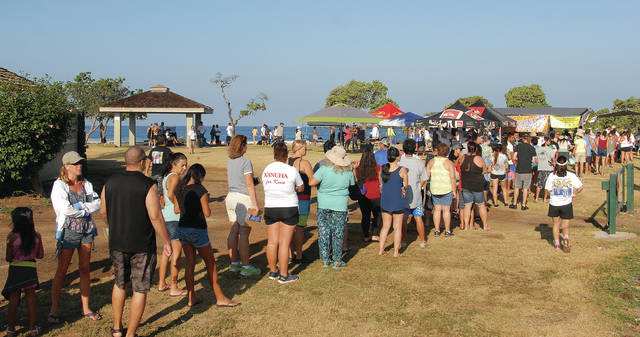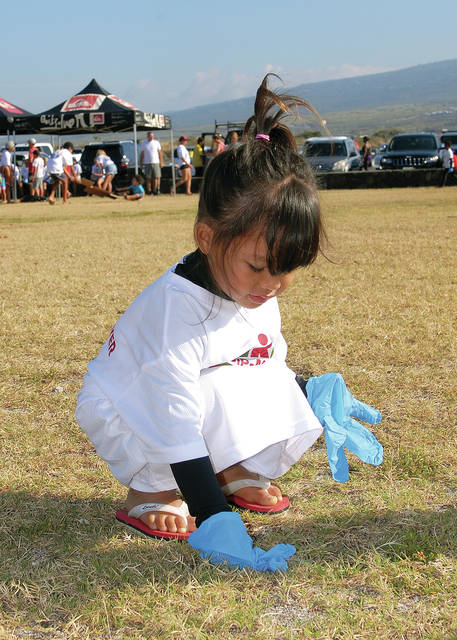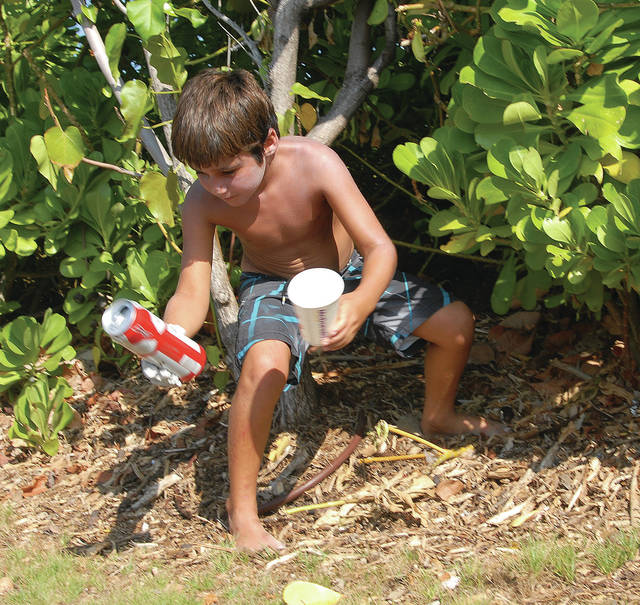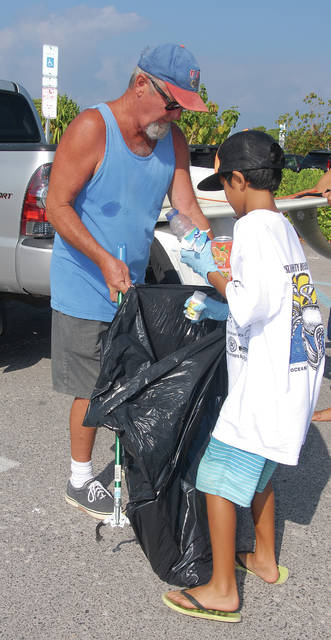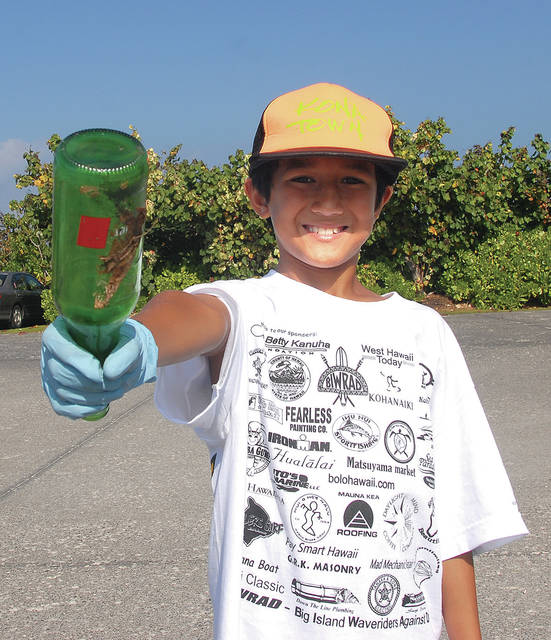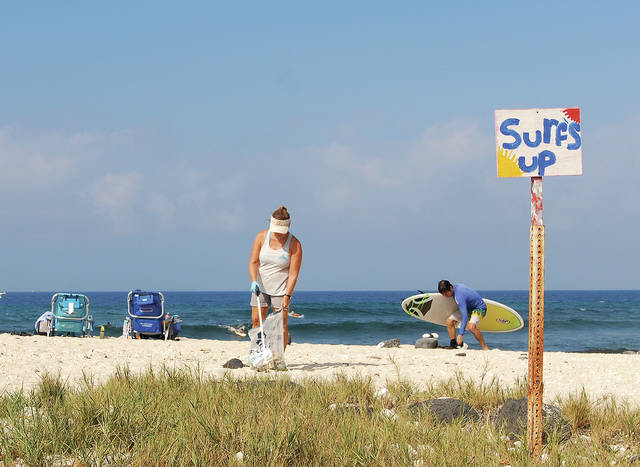‘This is our home’: Hundreds come out to clean up coast
KAILUA-KONA — Hundreds of volunteers — spread out along roughly 133 miles of coastline — pitched in Saturday morning to make the island a better place.
“This is our home,” said Jeff Fear of Big Island Wave Riders Against Drugs, one of the primary sponsors of the event. “We live in the most beautiful place in the world and we need to take care of it.”
The Betty Kanuha Foundation and County of Hawaii are also major sponsors of the annual event that not only beautifies, but helps the environment to boot.
Clad in white shirts and armed with gloves, bags and grabbing tools, volunteers took to everywhere from Puako to Honokohau to Honaunau, all in an effort to clean up.
Fear said the goal of the cleanup is to raise awareness about the effect rubbish has on the island, particularly microplastics and the marine life who eat it and die. Those plastics enter the food chain and come back to people, he said.
Each year, Fear said, 24 billion pounds of plastic are produced in the U.S. alone.
“Where does it all go?” he said. “It doesn’t dissolve; it doesn’t go anywhere.”
Greg Mikelson of Kona went to the event with his family, including his two daughters.
He said he wants his kids to see that it takes a community effort to maintain the island and that helping out can be enjoyable as well.
“It’s cool to see the community and just see people in the community do something for the island,” he said.
Fear likewise noted the responsibility residents have to younger generations.
“I just had a grandson,” Fear said. “And I’m like, what am I going to leave him? What are we going to leave him? You take him down to the beach and there’s microplastics everywhere.”
Mikelson, owner of Mauna Kea Roofing, said his business also took the opportunity to be a sponsor of this year’s event.
“As a business owner, you try to help maintain a leadership role in the community,” he said, “and it’s your chance to kind of give back and help the community.”
The event even brought out some some of those visiting the island, who said they want to keep Kona beautiful.
Lisa Larsen of Madison, Wisconsin, said she heard about the event and decided, even though they’re on vacation, that she wanted to do her share to contribute to clean the island’s beaches.
“So if we come back, we can continue to enjoy it,” she said. “Pay it forward, so to speak.”
Casey Colliander, his wife Amanda Colliander and Steve House spent the morning cleaning up between OTEC and Pine Trees before heading to work at Cyanotech later in the day.
Given Cyanotech’s close proximity to the area they were cleaning up, Casey Colliander said they wanted to take care of it.
“We always frequent that beach and it’s filthy,” he said. “And I’m tired of it.”
Amanda Colliander said she was surprised at how emotional she felt when she came back to Old Airport and saw the piles of trash bags people had filled up during the event.
“It just kinda hit you,” she said, while noting the sheer number of people that gave their time to take part.
House said this sort of event is a great way to set an example for kids, who can grow up respecting the land.
“It’ll eventually be theirs one day,” he said.
Mike Fitzpatrick, who was coordinating the beach cleanup at Kohanaiki, said he’d been “using this beach forever.”
“If we’re going to use it, we should take care of it,” he said. “The kids are having fun and they’re learning this, so they can teach their kids.”
Reginald Lindo, a coach at the Keauhou Canoe Club, was at the cleanup with his wife and members of the canoe club, saying he has a responsibility to set an example. This was his second year participating.
“Our goal is to teach our youngsters by example and lead by example about serving the community and giving back,” he said.
For Lindo, the issues uncovered by the cleanup extend beyond rubbish on the island. Last year, he said, he found drug paraphernalia, hypodermic needles and smoking pipes.
“It’s a multi-layered problem,” he said. “By making as much people as you can aware of it, you can help to tackle this thing.”
It’s not just raising awareness of trash, but also other societal issues.
“You see it here first-hand,” he said. “You see picking up hypodermic needles. That’s not something I expected when I came here last year.”
And, he said, he wants his paddlers to recognize the value of giving back.
“The payback is ten-fold,” he said.


